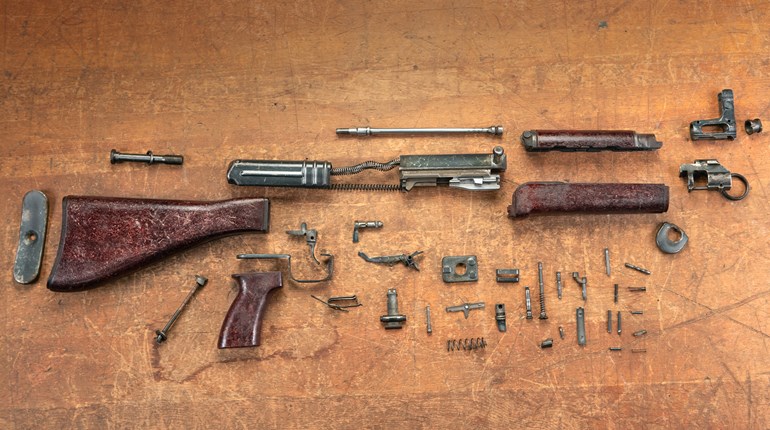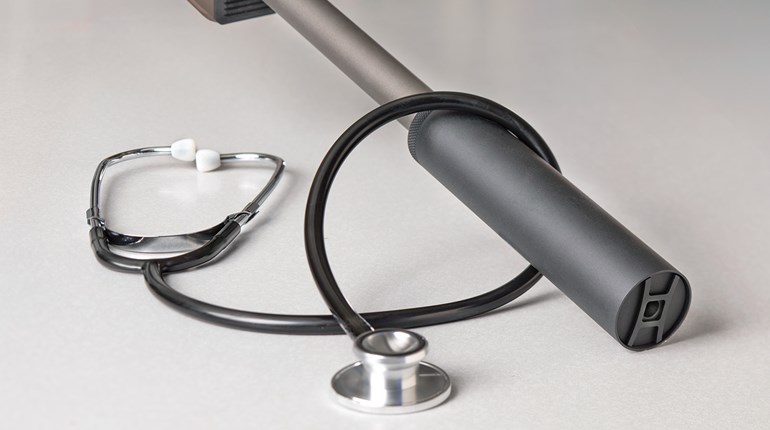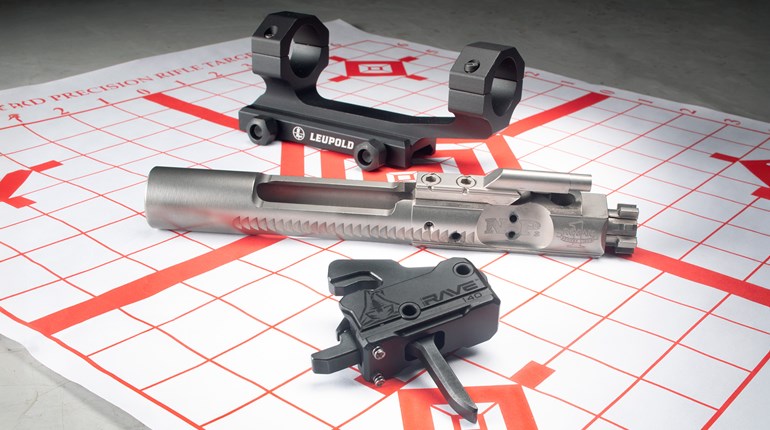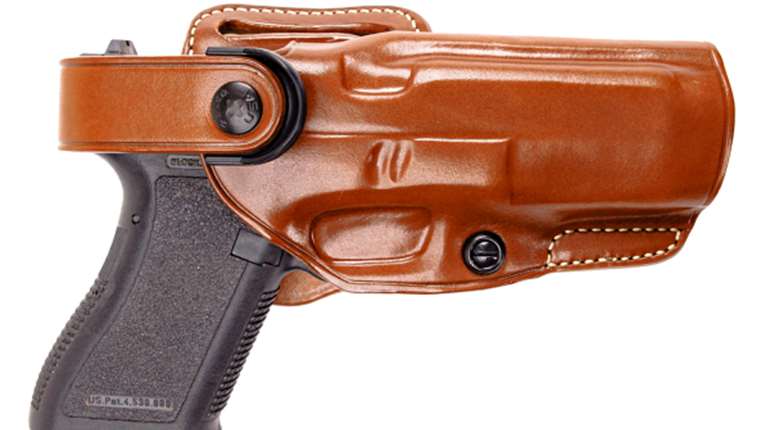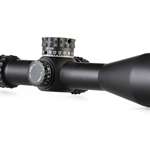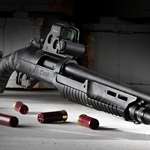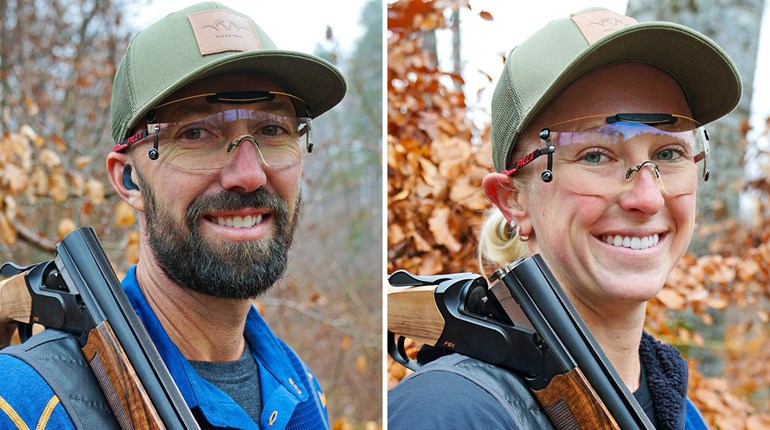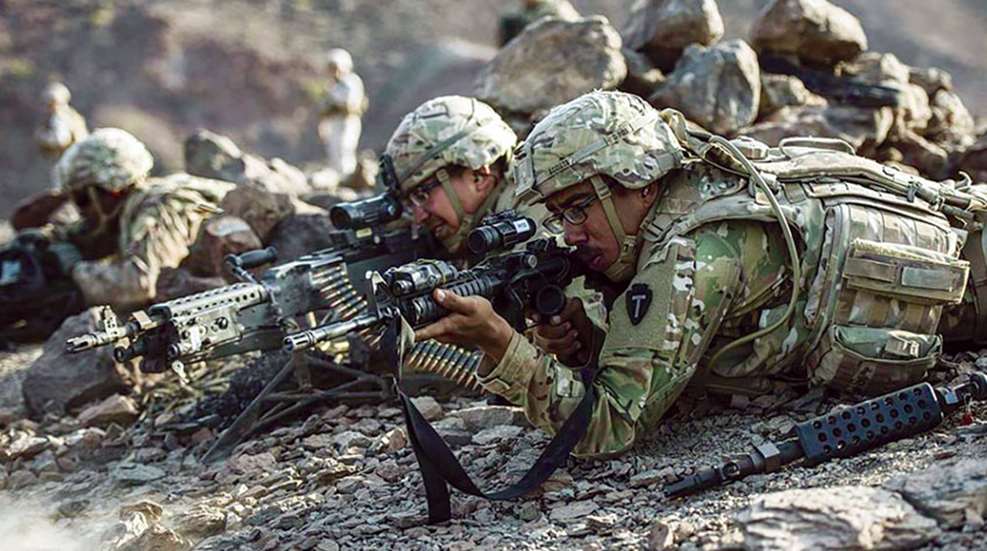
When considering the use of body armor, the entry-level issues of types, selection factors and sources are only part of the equation. Adding the bulk, weight and range-of-motion limits that come with a ballistic-protective vest presents other unique challenges to rifle shooters. Whether you wear soft-concealment armor, a surplus flak vest, a rifle-plate carrier or full-size, tactical soft armor with rifle plates, the following considerations may necessitate modifications to your rifle setup and shooting technique.
The first thing most new body-armor wearers notice is that shouldering a rifle or carbine is not as smooth as it used to be. The extra .75 inch or so of shoulder padding tends to catch the stock as the shooter attempts to seat it in the pocket. That problem is fairly easy to overcome with practice. Once shouldered, the next realization is that sighting systems and controls are farther away than normal. The thicker the ballistic vest one wears, the more drastic this change. This increase in length-of-pull (LOP) will also place any attached light and/or laser controls farther away. If you can still reach them with a bit of arm stretching, it is no big deal. Hopefully, those devices can be moved rearward along the fore-end if your arms can’t quite reach them.
Fortunately, many options exist to allow rapid stock adjustments to modern sporting rifles, bolt-action rifles and even some lever-action platforms. If your rifle has no such adjustability, your workarounds will be limited. Removing any recoil padding that may be present will at least move things rearward a small amount. Moving a magnified optic back along the receiver rail or within its rings will help correct eye-relief problems. A buttstock can be shortened or replaced with a shorter model if you wear armor regularly. Of course, these changes may reduce eye relief too much when not wearing armor, so make gradual adjustments and try to find a happy medium if you shoot with and without body armor.
Shape Matters
Another discovery rifle shooters make when donning a full vest or plate carrier for the first time is that some plate shapes are better than others. Going waaaaay back to the early 1990s, the bulky Kevlar assault vest I was issued held a thick, heavy ceramic plate that was shaped in what has come to be known as “full cut.” Back then, it was the only cut, and since it was rectangular, it covered part of the shoulder pocket. We compensated by learning to place our blessedly small CAR-15 stocks outside of the plates’ edges.
It was neither the most comfortable nor the most stable placement, but it worked fine for close-quarters battle. Full-cut plates also restrict how far the wearer can move their arms inward, especially when used in conjunction with a full-coverage, soft-armor system. The problem is more noticeable when shooting a pistol freestyle, but even with a shouldered rifle, a gradual tingling in your fingertips will let you know it is time change your arm position.
Thankfully, armor manufacturers began responding to this problem by offering “shooter’s-cut” plates a little more than 2 decades ago. This profile angles the plate’s top corners so they are no longer near the shoulder pocket. Buttstock placement and range-of-motion are much closer to normal with a shooter’s cut. A more dramatic “swimmer’s cut” is also available, which allows full arm range-of-motion in exchange for very narrow, center-chest ballistic protection. I count myself fortunate that my plans for swimming never involve body armor, so it is a shooter’s cut for me.
Prone Complications
Next up on the list of armor discoveries is that going prone while wearing a vest and rifle plate will make stable, comfortable belly shooting more difficult. Worse yet, those chest-mounted pouches that allow impressively fast reloads when you are upright will turn you into an upside-down turtle when you attempt to go prone. Carrying enough magazines to resupply a rifle platoon will prevent you from getting low enough to shoot well and become a smaller target. Once again, there are several options to deal with this problem.
First, move as much gear off of the chest as possible. This is not realistic option if CQB is your primary job, because in addition to spare magazines, your hands need to reach all sorts of other important gear without fumbling. In that case, reducing the thickness of those front pouches is helpful. Rotating less-critical gear to the back, where a buddy can access it for you, will free up the sides for some of those magazines hanging out front. If you have the real estate, opt for more pouches that hold fewer magazines to thin them down a bit.
I used another method to work around this problem in my younger days. Because my job involved equally heavy doses of CQB and sniping, my worn gear was in a constant state of flux. I did not always wear body armor, so having pouches attached to my armor carrier was not practical. Instead, I modified a chest rack to split down the center as if an AK vest mated with old-school, Army load-bearing equipment.
This gave me the ability to wear it over the top of my soft armor and hard plate (or just a plate carrier) with the vest secured tightly, bringing my magazine pouches together in front. If I needed to go prone—with or without Kevlar and a plate—I merely unhooked the split vest and went belly-to-ground like normal. Commercial MOLLE-compatible vests are available with this same design principle today.
Each body-armor type will be affected by these issues differently. Plate carriers that are trimmed down to just the dimensions of a rifle plate do not typically present length-of-pull problems while shouldering a rifle. Soft-concealment carriers do not drastically alter one’s ability to go prone. Large armor carriers with full-front-torso coverage and plates are the ones that take more effort to adjust to. In each case, spending time on the range with body armor on will help you learn the ins and outs of your setup. In addition to shooting from different positions, work through reloads in each position and ensure you can access other critical gear without dislocating your shoulder.












